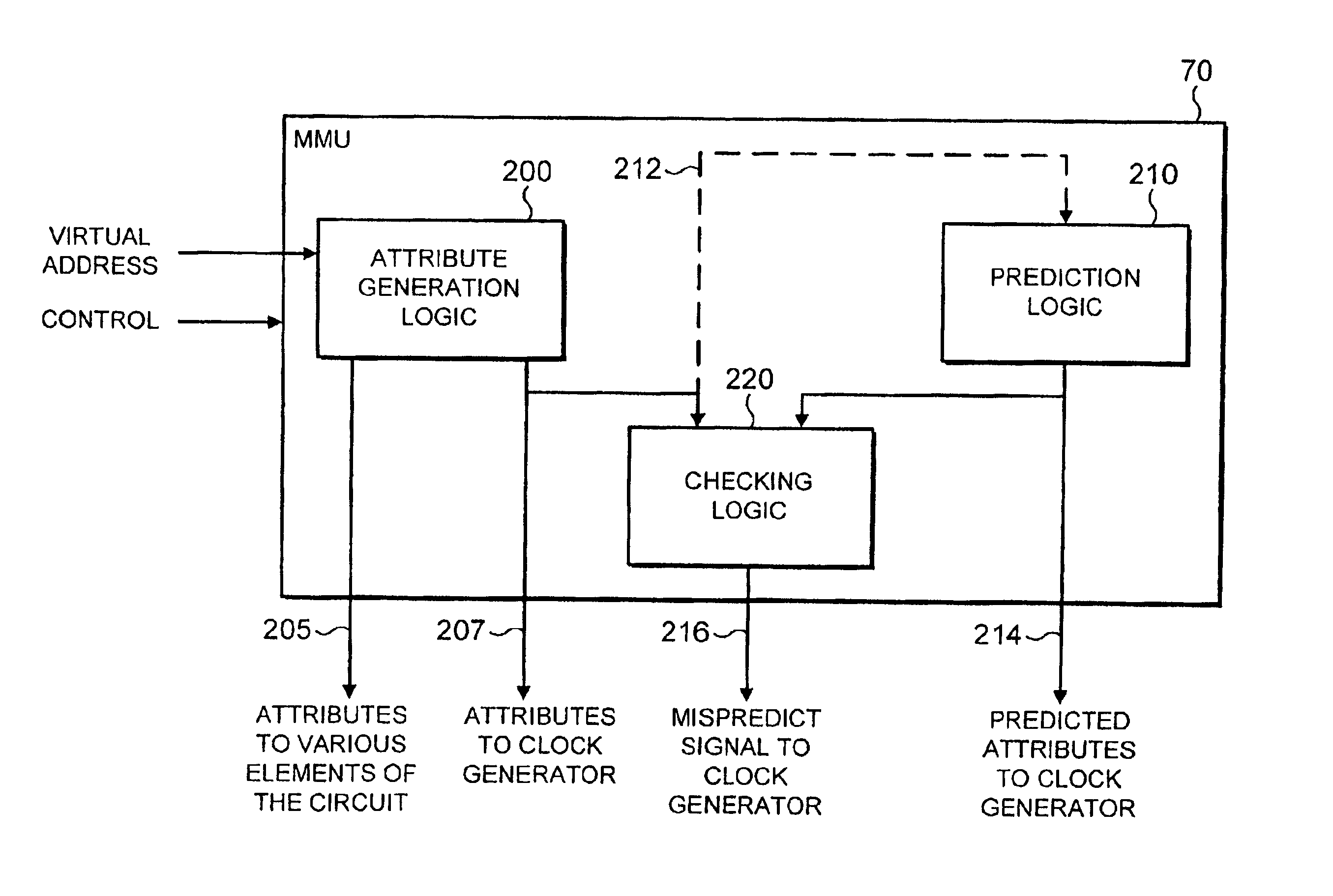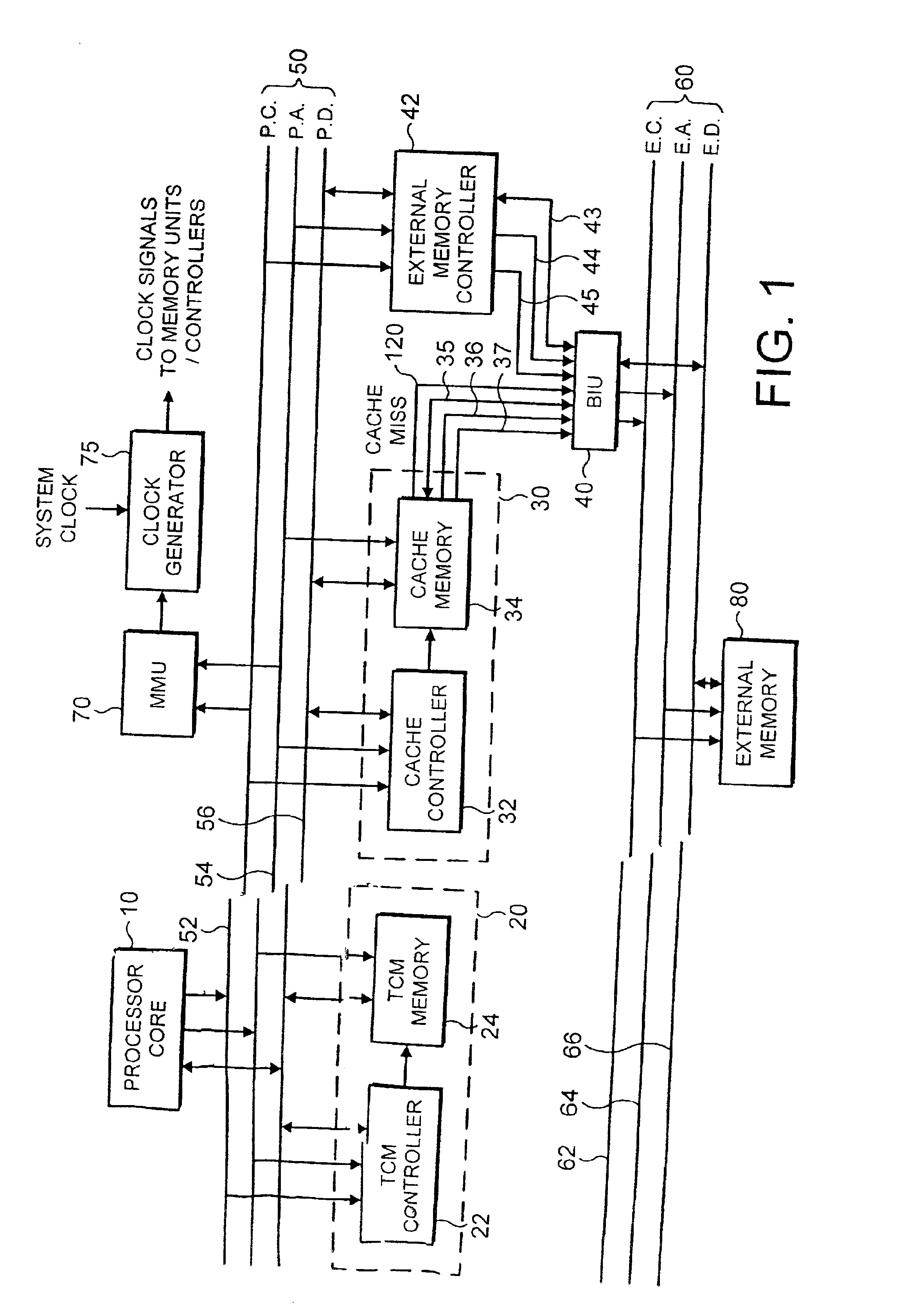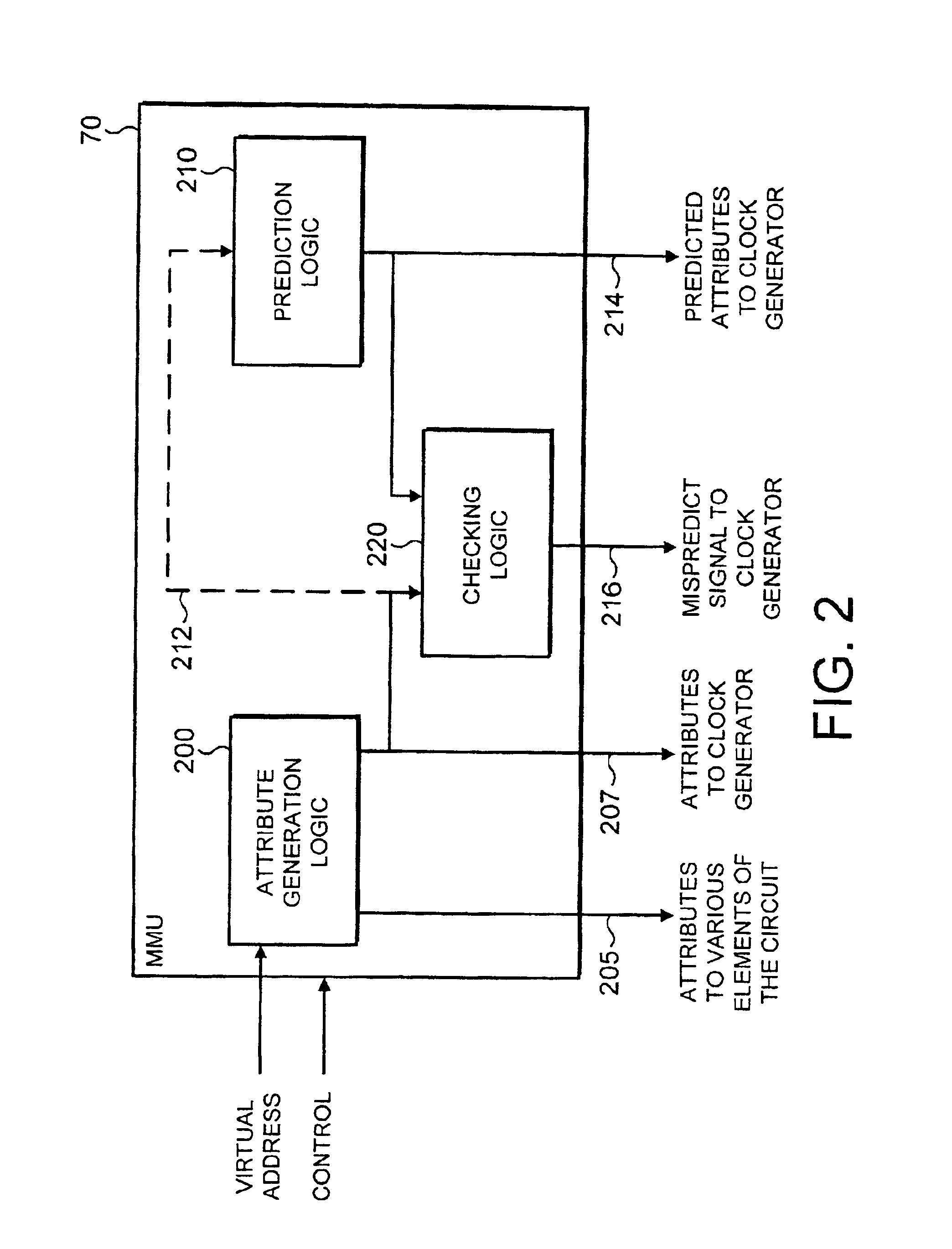Accessing memory units in a data processing apparatus
a data processing apparatus and memory technology, applied in data conversion, program control, sustainable buildings, etc., can solve the problems of data values being returned from the main memory, not being able to wait for a long time, and being relatively slow
- Summary
- Abstract
- Description
- Claims
- Application Information
AI Technical Summary
Benefits of technology
Problems solved by technology
Method used
Image
Examples
Embodiment Construction
A data processing apparatus according to a preferred embodiment of the present invention will be described with reference to the block diagram of FIG. 1. As shown in FIG. 1, the data processing apparatus has a processor core 10 arranged to process instructions received from the memory system 20, 30, 80. Data required by the processor core 10 for processing those instructions may also be retrieved from the memory system. It will be appreciated that these "data values", whether they be instructions or data, may be of any appropriate size, for the purposes of the preferred embodiment description it being assumed that each data value is 32 bits in size.
In a typical implementation, the data values required by the processor core 10 will be placed in the external memory 80. In addition, a cache 30 is provided for storing data values retrieved from the memory 80 so that they are subsequently readily accessible by the processor core 10. A cache controller 32 controls the storage of data valu...
PUM
 Login to View More
Login to View More Abstract
Description
Claims
Application Information
 Login to View More
Login to View More - R&D
- Intellectual Property
- Life Sciences
- Materials
- Tech Scout
- Unparalleled Data Quality
- Higher Quality Content
- 60% Fewer Hallucinations
Browse by: Latest US Patents, China's latest patents, Technical Efficacy Thesaurus, Application Domain, Technology Topic, Popular Technical Reports.
© 2025 PatSnap. All rights reserved.Legal|Privacy policy|Modern Slavery Act Transparency Statement|Sitemap|About US| Contact US: help@patsnap.com



